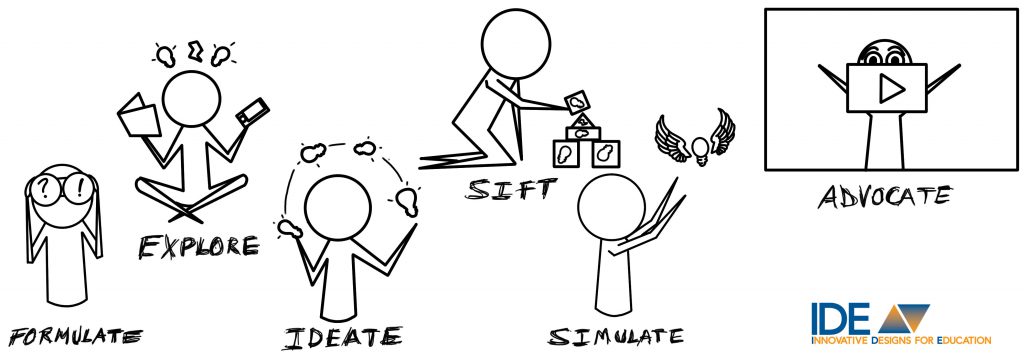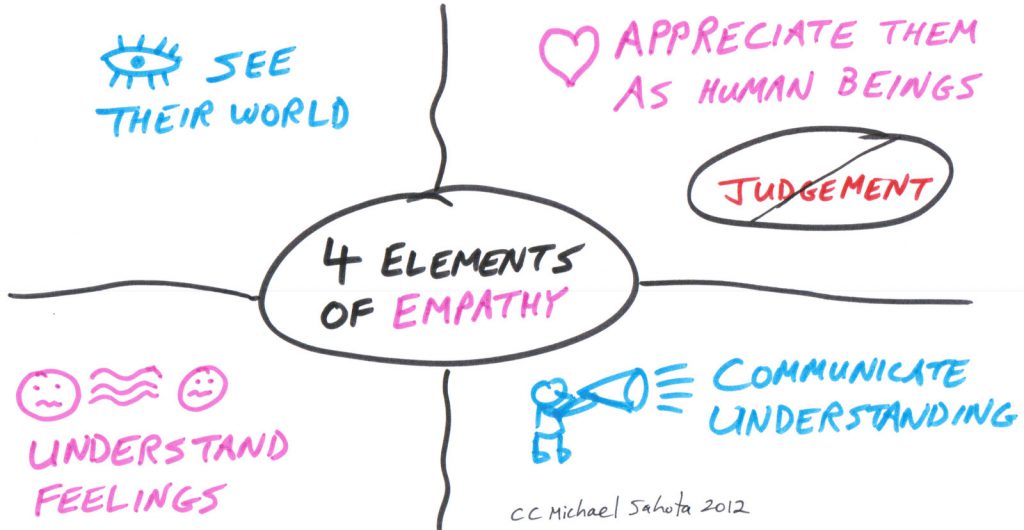The engineering design process (see video) is about creating that which does not yet exist. You formulate a problem, explore content related to it, ideate to brainstorm possible solutions, sift through those to select the most effective and feasible, simulate the solution through a prototype you can test, and then, advocate for that solution.

Voilà! You’ve solved a problem. Or have you?
If you haven’t addressed the needs of those affected by the problem, you haven’t solved it. In order to address those needs, you must be able to comprehensively understand how others are affected by the problem. The Cambridge Dictionary defines empathy as “the ability to share someone else’s feelings or experiences by imagining what it would be like to be in that person’s situation.”
In IDE Corp.’s design process, the first step is to “formulate” the problem. What is the ideal situation? What is the reality? What are the consequences of not solving the problem? Answering the latter two questions requires you to understand deeply how others are affected by the problem, that is, to demonstrate empathy.
Empathy is complex. Consider the nuances of three kinds of empathy, described in a blog post by Daniel Goleman, the author of Emotional Intelligence. All are important to develop.
- Cognitive empathy is the ability to take a perspective and understand what another person is feeling or thinking. This is an important skill but, absent other types of empathy, it can have a dark side: Those who possess it can use it to manipulate and torture others.
- Emotional empathy is the ability to feel along with the person, often experiencing the same physical effects. Scientists are linking this ability to the existence of mirror neurons in the brain. This, too, is important; however, it could leave the empathizer emotionally drained if unable to manage these emotions.
- Compassionate empathy involves both understanding and a compelling need to help. While this kind of empathy is that which leads to success in the design process, cognitive and emotional empathy are critical companions in truly understanding how a problem affects others.
Empathy is also comprehensive, depicted in the graphic below as having four elements:

As you engage students in the design process, teach them How to Develop an Empathic Approach in Design Thinking.
